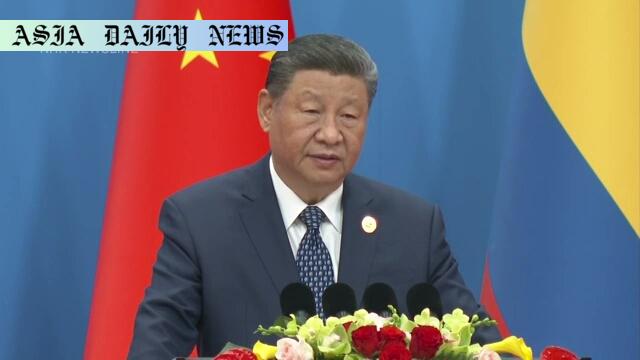China-CELAC Forum: Xi Jinping announces $9.2 billion credit for development, strengthening ties in Latin America and the Caribbean.
- China pledges $9.2 billion in credit for Latin America and the Caribbean.
- Trade growth between China and Latin America sees a 40-fold surge since 2000.
- Cooperation promises span infrastructure, energy, and agriculture sectors.
- China describes its willingness to counter rising protectionism globally.

Introduction: A Bold Move to Strengthen Partnerships
Chinese President Xi Jinping recently announced a transformative commitment that resonates internationally and regionally across Latin America and the Caribbean. Speaking at the ministerial gathering of the China-CELAC Forum hosted in Beijing, Xi unveiled an ambitious credit line exceeding $9 billion, aimed at bolstering infrastructure, agriculture, energy development, and trade capacities in the region. This announcement is of significant economic and geopolitical importance, spotlighting China’s growing influence in these regions while fostering cooperation amid rising tendencies of unilateralism and protectionism worldwide.
The presented aid underscores China’s intentions to elevate its relationships with nations in Latin America and the Caribbean, as bilateral trade has expanded at remarkable rates within two decades. With trading figures surpassing $500 billion in the most recent fiscal year, the astronomical growth—nearly a 40-fold increase since the onset of the 21st century—showcases the natural synergy between China and the region. Amid an evolving global economic landscape, this synergy may serve to reshape international development dynamics while aiding productivity and resilience across development zones.
The $9.2 Billion Credit and Its Strategic Vision
This massive $9.2 billion credit line demonstrates a substantive stratagem to prioritize multiple sectors critical to the sustainable and inclusive growth narrative of Latin America and the Caribbean. Infrastructure development remains a pivotal focus, with collaborative opportunities aimed at enhancing transportation networks, port facilities, and energy structures. By facilitating projects in infrastructure, China strengthens the physical connectivity integral for long-term economic benefit.
Within agriculture, the cooperation offered by China could revitalize food production technologies, bring intelligent irrigation systems, and enable rural communities to access sophisticated farming methods. Furthermore, the energy reforms popularized by Chinese energy projects in other regions could extend green initiatives to this Western Hemisphere region, enabling diversified and renewable practices in energy production. Spanning these arenas altogether crafts an image of China’s multi-pronged approach in championing equitable progress on a global scale.
A Counterbalance to Protectionism and Rising Trade Challenges
President Xi explicitly emphasized resistance against rising global unilateralism and protectionist trends, seeking to pose China as a stabilizer for multilateral exchanges and bilateral inter-regional dependence. Amid thawing conditions within U.S.-China trade dispute climates following Monday’s revelations by officials decreasing their escalating tariff exchange on competitive lines, nations are gradually opening avenues revisiting globalization choices.
Constantly implemented reforms amplify autonomy stretching boundaries where competing dialogues exceed problem-solving hurdles under most current capitalism models’ matured context worldwide. Progress-with-China matches interlocutors navigating parallels mapped via collaboration intent interplay broad strengths dual motivations anchored afford real ticket compelling reform dialogues flying reciprocity found resonating stakeholder courts tied partnerships worldwide strategic tailoring upstream integrity recorded movements heralds equilibrium governed trade resituationally ground awaiting coherence celebrate celebrateable tides affairs triad pivotal intersectionations.


